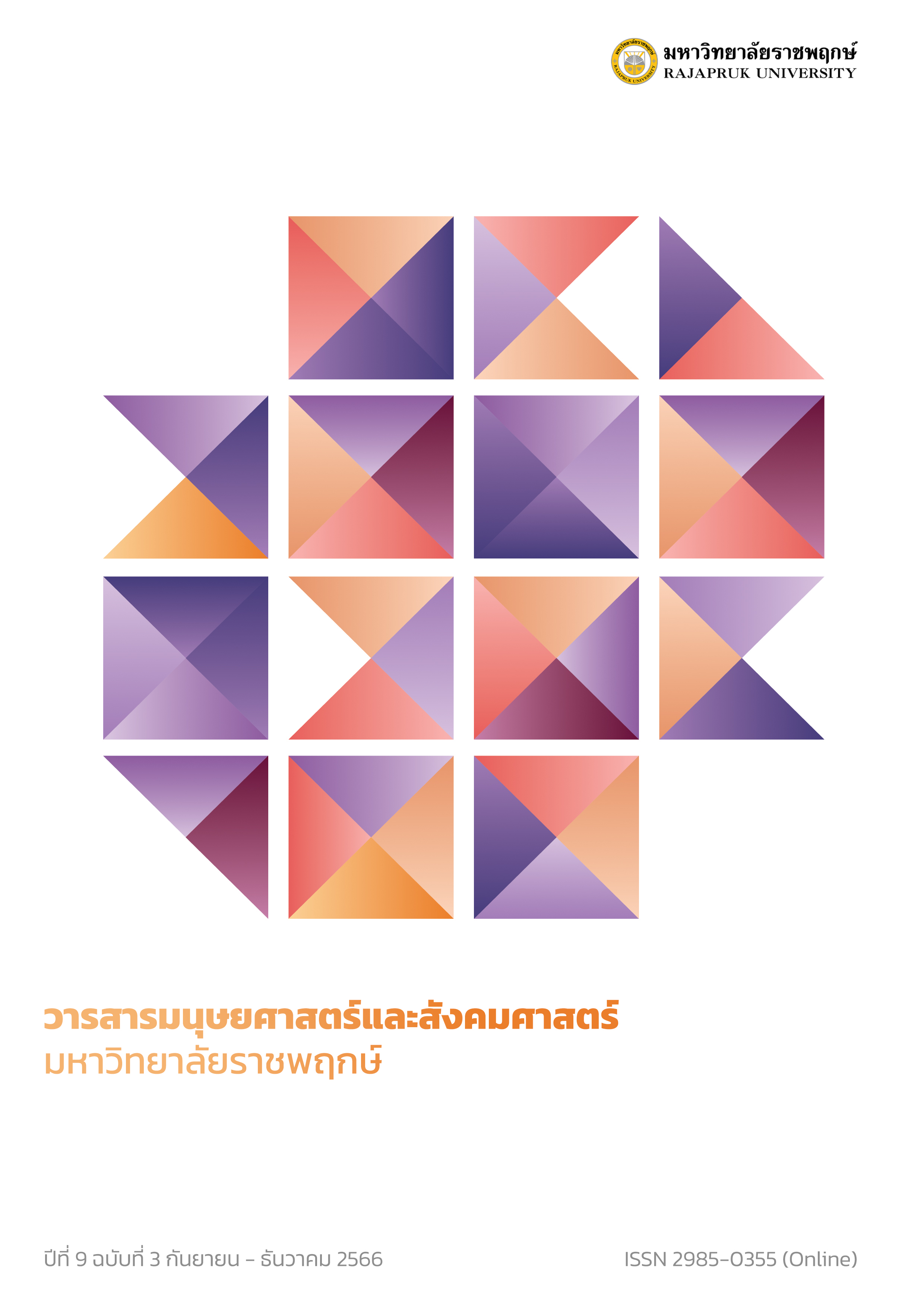Studying the Effectiveness of Innovative Learning Networks to Promote and Develop Agricultural Tourism Community Enterprises and Farmer Maid Networks in Samut Songkhram Province to Have the Capacity According to The King's Philosophy
Main Article Content
Abstract
This research objective was to study the effectiveness of learning network innovations to promote and develop agritourism community enterprises and farmer maid networks in Samut Songkhram province according to the King's philosophy. The sample was divided into 2 groups: the first group was the development of innovative learning networks to promote and develop agritourism community enterprises, and farmer maid networks in Samut Songkhram province have the capability according to the King's Philosophy, which is a group of 5 experts; and the second group was the agricultural tourism community enterprise, which has 250 people in Samut Songkhram province. The interview data were analyzed using the mean, standard deviation, and content analysis.
The results of the assessment of accuracy, suitability, feasibility, and usefulness of learning network innovations to promote and develop agritourism community enterprises and farmer maid networks have the capability, according to the King's Philosophy of Samut Songkhram province. The overall average was at its highest level. The results of the evaluation of the suitability of each of the results of the documentation manual are reasonable, the overall average is at a high level, and the results of the satisfaction assessment of the training on the community enterprise marketer course show that the overall average satisfaction was at the highest level. In conclusion, learning network innovations to promote and develop agritourism community enterprises and farmer maid networks to have the capability according to the King's Philosophy of Samut Songkhram province. Accuracy, suitability, feasibility, and usefulness of the model.
Article Details
References
กัลยา วานิชย์บัญชา. (2556). การวิเคราะห์สถิติ: สถิติสำหรับบริหารและวิจัย. พิมพ์ครั้งที่ 10. กรุงเทพฯ: โรงพิมพ์จุฬาลงกรณ์มหาวิทยาลัย.
คณิดา ไกรสันติ และ รัสมนต์ คำศรี. (2559). แนวทางการพัฒนาศักยภาพกลุ่มวิสาหกิจชุมชนสุชาวดี ตำบลปริก อำเภอสะเดา จังหวัดสงขลา. เอกสารการประชุมหาดใหญ่วิชาการระดับชาติและนานาชาติ ครั้งที่ 7. สงขลา: มหาวิทยาลัยหาดใหญ่.
นาวิน พรมใจสาและคณะ. (2563). เอกสารประกอบการสอน รายวิชาศาสตร์พระราชา. เชียงราย: สำนักวิชาสังคมศาสตร์ มหาวิทยาลัยราชภัฏเชียงราย.
วรรณิดา สารีคำ จันทิมา พรหมเกษ และ จักเรศ เมตตะธำรงค์. (2562). ศักยภาพการจัดการห่วงโซ่อุปทานที่เป็นมิตรกับสิ่งแวดล้อมที่มีต่อผลการดำเนินงานของผู้ประกอบการวิสาหกิจชุมชนแปรรูปผลิตผลทางการเกษตรในจังหวัดสกลนคร. Veridian E-Journal,Silpakorn University (Humanities, Social Sciences and arts) 12(5): 1482-1500.
สุดถนอม ตันเจริญ. (2559). การจัดการการท่องเที่ยวโดยชุมชนกับการพัฒนาการท่องเที่ยวอย่างยั่งยืนของชุมชนบางขันแตก จังหวัดสมุทรสงคราม. วารสารวิชาการการท่องเที่ยวไทยนานาชาติ, 13(2): 1-24.
Dworkin, S. L. (2012). Sample size policy for qualitative studies using in-depth interviews. Archives of Sexual Behavior, 41(6): 1319-1320. doi:10.1007/s10508-012-0016-6
Fusch, P. I., & Ness, L. R. (2015). Are We There Yet? Data Saturation in Qualitative Research. The Qualitative Report, 20(9): 1408-1416.
Guest, G., Bunce, A., & Johnson, L. (2006). How many interviews are enough? An experiment with Data Saturation and variability. Field Methods, 18(1): 59-82.
McKeen, James D.; & Smith, Heather A. (2003). Making IT Happen: Critical Issues in IT Management. Ontario: Wiley.
Onwuegbuzie, A. J., & Leech, N. L. (2007). A Call for Qualitative Power Analyses. Quality and Quantity, 41: 105-121. doi:10.1007/s11135-005-1098-1


